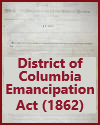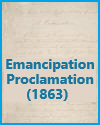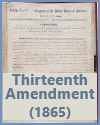Unit VII: Civil War and Reconstruction |
|---|
| www.studenthandouts.com > U.S. History > Civil War > Maps and Pictures |
 |
 |
 |
 |
|||||||
| Abraham Lincoln (1809-1865) | District of Columbia Emancipation Act (1862) | Emancipation Proclamation (1863) | Thirteenth Amendment (1865) | Booker T. Washington (1856-1915) |
 |
 |
 |
||||||||
| Lincoln, Pinkerton, and McClernand at Antietam | Confederate Soldier Clip Art | Civil War Soldiers |
|
Looking at maps, pictures, and historical documents can greatly enhance students' understanding of the U.S. Civil War by providing visual and primary source context.
Geographical Understanding: Maps can illustrate the geographical aspects of the Civil War, showing the locations of key battles, states that seceded, and the border states. This helps students visualize the theater of war and understand its impact on different regions. Strategic and Tactical Analysis: Detailed battle maps can provide insights into the strategies and tactics employed by both Union and Confederate forces. Students can see troop movements, terrain, and positioning, aiding in the analysis of military decisions. The Human Perspective: Photographs from the era capture the faces and experiences of soldiers, civilians, and enslaved people. These images humanize the conflict and allow students to empathize with the people who lived through it. Cultural and Societal Aspects: Visual materials depict the clothing, technology, and living conditions of the time. Students can compare the social and cultural aspects of the 1860s with the present day. Impact on Civilian Life: Photographs of civilian life during the Civil War, such as women working in factories, children in war-torn areas, and the effects of the war on cities, provide a glimpse into the challenges faced by non-combatants. Primary Source Analysis: Letters, diaries, speeches, and newspapers from the Civil War era serve as primary sources. Analyzing these documents helps students understand the perspectives, motivations, and emotions of individuals during the war. Political and Legal Documents: Key documents like the Emancipation Proclamation and the Gettysburg Address provide insight into the political and legal aspects of the Civil War, including the struggle for emancipation and the preservation of the Union. Propaganda and Artifacts: Propaganda posters, political cartoons, and artifacts such as uniforms, weapons, and flags offer a window into the ideological and symbolic aspects of the war. Changing Borders and Territories: Maps showing the changing borders of the Confederacy and Union can help students understand the shifting dynamics of the Civil War and its impact on the nation's geography. Reconstruction Era: Visual and written materials from the Reconstruction era illustrate the challenges of rebuilding the South and addressing issues such as civil rights and political change. Visual Timeline: Combining maps and pictures in a timeline format allows students to follow the progression of the war visually, seeing where key battles occurred in relation to important historical moments. Incorporating maps, pictures, and historical documents into American History lessons enriches the learning experience, making the Civil War and its aftermath more tangible and relatable. These visual and primary source materials enable students to engage with the past on a deeper level and develop a multifaceted understanding of this pivotal period in U.S. history. |
| www.studenthandouts.com > U.S. History > Civil War > Maps and Pictures |







